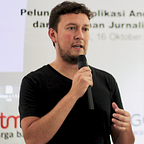2.5 Iterating on Previous Growth Experiments
A key part of the growth science methodology is iteration. It’s not enough to form one hypothesis, test it, and implement a change. If you stop short, you’ll be missing out on substantial optimizations that can add up to incredible gains to customer or revenue growth. The key is to keep experimenting in areas where previous changes have led to strategically significant gains.
You can either iterate on past experiments and try small variations or try the same kinds of experiments in other contexts. For example, let’s say that you try an experiment to get more people to click on the registration button on your website. In trying to increase the conversion rate on new customer registration on your web app, you don’t want to stop with just changing the color of the “Register” button to bright green. You also should double down on this line of thinking and test changing the button color to orange and red. Not only that, you might try very related experiments such as testing the label text. Perhaps you can try “Sign up” and “Get Started” instead of “Register.” And these iterations are only for one button. Not only that we haven’t even started talking about marketing and operations.
A great example of iterative experimentation leading to markedly higher increases in growth comes from a leading language learning platform, Duolingo. Gina Gotthilf, VP of Growth, recounted the story of how her team made huge strides in Duolingo’s customer engagement through iterative experimentation with their registration process.
The impetus for this effort was an observation that many of the people that had registered never actually tried a language course afterward. Gotthilf’s growth team hypothesized that by letting prospective users try the Duolingo’s courses before they are asked to register, people would be more likely to stick with the product and have a good experience in the long-term. Indeed, the growth team found that the daily active user rate increase by about 20% by first letting users try Duolingo before they were asked to sign up.
However, the growth team did not stop there. They also tried changing the color of the cancel button from red to white to reduce the number of people that abandoned the registration process, and that experiment also yielded an improvement. Finally, Gotthilf’s team experimented with subtle calls to registration throughout the trial that users could ignore, which yielded another 8.2% increase in daily active users. Each round of experiments led to compounding gains to growth — something that Duolingo would have missed had the growth team stopped after the first experiment.
As you can see from the above examples each little change to product implementation, marketing, and operations can be a new experiment. It is important to keep track of all these ideas that your team conceives as well as to keep prioritizing them based on your overall growth strategy to make sure that your team is not overwhelmed by the volume of things to try. It is also critical to evaluate potential experiments with your objectives and success criteria in mind, so you are not wasting your resources on changes that are not very impactful.
This post is part of the Growthzilla Book series, which is an online draft of the print edition that will be available in 2018. Be sure to check back on tomorrow to learn about measuring the right metrics for growth. New sections of Growthzilla are published every weekday.
